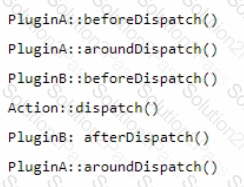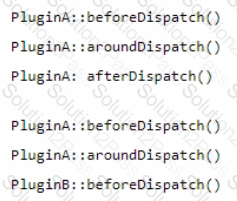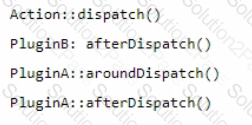AD0-E716 Adobe Commerce Developer Expert Free Practice Exam Questions (2025 Updated)
Prepare effectively for your Adobe AD0-E716 Adobe Commerce Developer Expert certification with our extensive collection of free, high-quality practice questions. Each question is designed to mirror the actual exam format and objectives, complete with comprehensive answers and detailed explanations. Our materials are regularly updated for 2025, ensuring you have the most current resources to build confidence and succeed on your first attempt.
An Adobe Commerce developer successfully added a new column to the customers grid. This column needs the data to be formatted before showing its content in the grid.
According to best practices, how would the developer add the custom logic to render the column?
An Adobe Commerce Cloud merchant has been experiencing significant downtime during production deployment. They have already checked that the application is in ideal state.
In addition to the configuration of the SCD.MATRIX variable to reduce amount of unnecessary theme files, what would be the next steps to reduce the downtime?
An Adobe Commerce developer creates a new website using a data patch. Each website will have unique pricing by website. The developer does not have visibility into the production and staging environments so they do not know what the configuration currently is.
How would they ensure the configuration is deployed and consistent across all environments?
A)

B) 
C)

An Adobe Commerce developer has added a new configuration field to the admin area. The path for this option is general/store_information/out_of_hours_phone.
Keeping simplicity in mind, how would the developer ensure this option contains a valid US telephone number?
What is the command used to upgrade ECE-Tools on an Adobe Commerce Cloud platform?
The di. xml file of a module attaches two plugins for the class Action.
The PluginA has the methods: beforeDispatch, aroundDispatch, afterDispatch. The PluginB has the methods: beforeDispatch, afterDispatch.

The around plugin code is:

What would be the plugin execution order?
A)

B)

C)

An Adobe Commerce developer is working on a Magento 2 instance which contains a B2C and a B2B website, each of which contains 3 different store views for English, Welsh, and French language users. The developer is tasked with adding a link between the B2C and B2B websites using a generic link template which is used throughout the sites, but wants these links to display in English regardless of the store view.
The developer creates a custom block for use with this template, before rendering sets the translate locale and begins environment emulation using the following code:

They find that the template text is still being translated into each stores language. Why does this occur?
An international merchant is complaining that changes are taking too long to be reflected on the frontend after a full product import.
Thinking it may be database issues, the Adobe Commerce developer collects the following entity counts:
• Categories: 900
• Products: 300k
• Customers: 700k
• Customer groups : 106
• Orders: 1600k
• Invoices: 500k
• Creditmemos: 50k
• Websites : 15
• Stores : 45
What is a probable cause for this?
An Adobe Commerce Cloud project is using Enhanced Integration Environments with two install a new payment module.
The developer is using Cloud CLI for Commerce tool.
What would a developer do to test this new feature under the integration environment?
What are two ways to access the PHP error logs on Adobe Commerce Cloud? (Choose Two.)
An Adobe Commerce developer has been tasked with applying a pricing adjustment to products on the website. The adjustments come from a database table. In this case, catalog price rules do not work. They created a plugin for getPrice on the price model, but the layered navigation is still displaying the old price.
How can this be resolved?
When attempting operations that require lengthy processing, a merchant on Adobe Commerce Cloud receives a timeout error after 180 seconds.
How would the developer deal with this issue?
On an Adobe Commerce Cloud platform, in which order does the ECE-Tools package apply patches?
An Adobe Commerce developer has created a process that exports a given order to some external accounting system. Launching this process using the Magento CLI with the command php bin/magento my_module:order: process --order_id=
Example: php bin/magento my_module:order:process --order_id=1245.
What is the correct way to configure the command?
A)

B)

C)

D)

Which hashing algorithm will Adobe Commerce choose to hash customer passwords?
An Adobe Commerce developer has added an iframe and included a JavaScript library from an external domain to the website. After that, they found the following error in the console:
Refused to frame [URL] because it violates the Content Security Policy directive.
In order to fix this error, what would be the correct policy ids to add to the csp_whitelist.xml file?
An Adobe Commerce Developer has written an importer and exporter for a custom entity. The client is using this to modify the exported data and then re-importing the file to batch update the entities.
There is a text attribute, which contains information related to imagery in JSON form, media_gallery. This is not a field that the client wants to change, but the software they are using to edit the exported data seems to be modifying it and not allowing it to import correctly.
How would the developer prevent this?
A) Specify a serializer class for the attribute using the $_transformAttrs class property array for both the exporter and importer so it gets converted:

B) Strip the attribute from the imported file by adding it to the s_strippedAttrs class property array:

C) Prevent it from being exported by adding it to the $_disat>iedAttrs class property array:

There is the task to create a custom product attribute that controls the display of a message below the product title on the cart page, in order to identify products that might be delivered late.
The new EAV attribute is_delayed has been created as a boolean and is working correctly in the admin panel and product page.
What would be the next implementation to allow the is_delayed EAV attribute to be used in the .phtml cart page such as $block->getProduct()->getIsDelayed()?
A)
Create a new file etc/catalog_attributes.xmi:

B)
Create a new file etc/extension attributes.xmi:

C)
Create a new file etc/eav attributes.xmi:

An Adobe Commerce developer is tasked with adding custom data to orders fetched from the API. While keeping best practices in mind, how would the developer achieve this?
A new customer registered on the Integration environment of an Adobe Commerce Cloud project but did not receive a welcome email What would be blocking the email from being sent?
